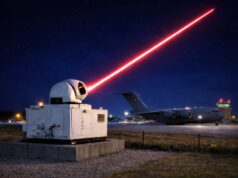Russia’s Defense Ministry plans to sign a new contract in the summer for the delivery of several dozen Sukhoi Su-34 frontline bombers, according to local media.
Reportedly, the aircraft will also have their combat capabilities expanded under the ‘Sych experimental design work’, a source in the defense industry told TASS on Wednesday.
“The Defense Ministry plans to sign a contract with the Sukhoi Company this summer for the delivery of several dozen Su-34 planes to the troops with expanded combat capabilities. The aircraft will integrate the latest avionics suite developed under the Sych experimental design work,” the source was reported as saying.
The Sych experimental design work was completed in 2019 and, in particular, “it envisages installing underslung reconnaissance containers on Su-34s,” the source specified.
“Also, the range of air-launched weapons, which the Su-34 will be able to employ, increases significantly in the process of this work,” the source said.
The Su-34 is designed primarily for tactical deployment against ground and naval targets.
Russia is developing two new versions of the aircraft: one for electronic warfare (L700 Tarantul ECM pod can provide electronic cover for a group of aircraft) and one for Intelligence, surveillance, and reconnaissance.
The Su-34M version will feature a new electro-optical infrared targeting pod, a Kopyo-DL rearward facing radar that can warn the pilots if missiles are approaching, combined with automatic deployment of countermeasures.













The West is trying to get away from active missile warning radar. This is because a) you can detect the missile warner and b) a number of missiles can home on to the radar emission. It will be interesting to know if the Kopyo-DL uses phased arrays or just a fixed/omni-directional antenna. With the phased array it will help with countermeasures, but also allow you to determine the exact angle, range and time to intercept. Whereas using the fixed/omni-directional antenna will only give you range and time to intercept.
In the West there are few aircraft that still use an active radar missile warning system, the Typhoon being one of them.
The West has been in favour of passive IR based missile warning systems along with UV based systems. However, both of these can suffer from atmospheric and environmental interference, more so than radar. Originally the systems could not provide time to intercept or range. But with the advent of focal plane arrays using charge-coupled devices (CCDs), they have been able to give a rough estimate. This is done by counting the amplitude of the pixel’s signal, then mapping its direction compared to the aircraft’s local position/heading. It’s enough for Directional Infrared Counter Measures (DIRCM) to point the beam in the direction of the threat. A radar or lidar using a phased array is still the gold plate solution for detecting the threat and then steering countermeasures against it. If active radars are to be used, then it’s best to use directional phased array antenna rather than fixed/omni-directional antenna, as you have the ability to sweep/point the beam in confusing patterns and at very high rates, making it more difficult for systems to detect you or lock on to the transmitted signal.